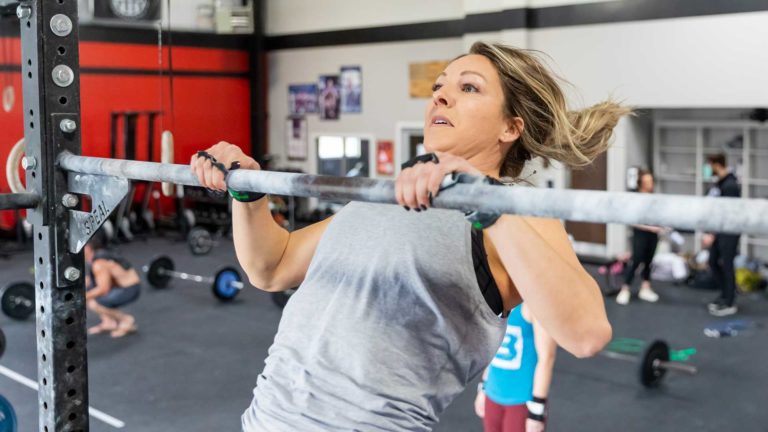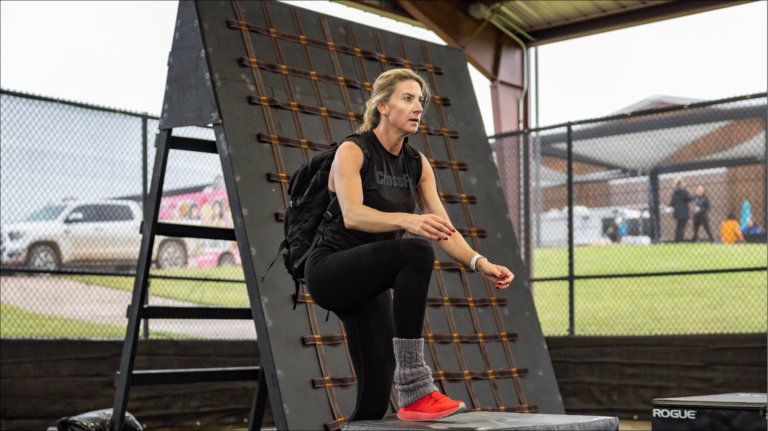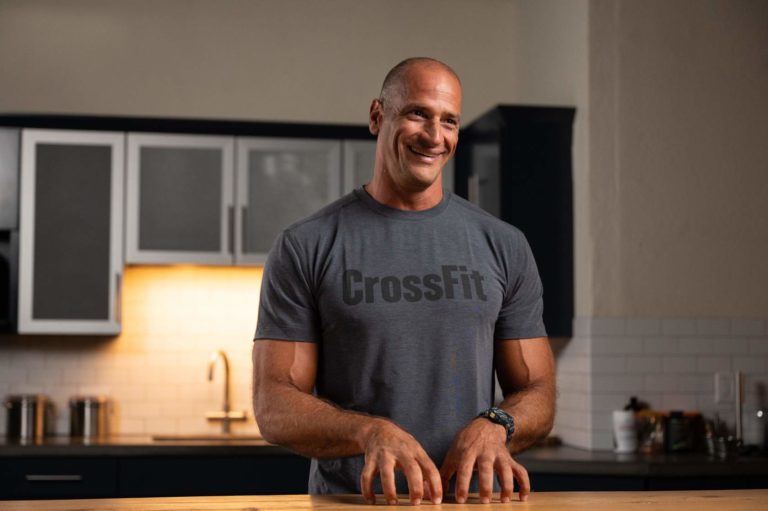Every year, as the CrossFit Open draws to a close and it’s time to get back to our regular workout schedule, we’re armed with a ton of valuable information that can propel us to new heights of fitness in the coming year. The Open has an uncanny knack for exposing areas of weakness, whether in our struggles with muscle-ups, heavier thrusters, or lack the stamina and conditioning to finish under the time cap.
We can use this feedback to help guide our training moving forward. But the Open shouldn’t be the only time we test and asses our fitness. We can gather this type of valuable data year-round by revisiting a set of benchmark workouts regularly, and the 15 benchmark workouts listed in our CrossFit athlete profiles are a great place to start.
The Workouts
If you go to your CrossFit account, you’ll see an athlete profile that lists these 15 benchmark stats:

Group 1: Tests for maximal or near maximal strength and power
- Back squat
- Deadlift
- Clean and jerk
- Snatch
Group 2: Tests for strength, stamina, and endurance in the glycolytic pathway
- Fran (21-15-9 thrusters and pull-ups – 65/95 lb)
- Grace (30 clean and jerks – 95/135 lb)
- L1 Benchmark (3 rounds: 15 thrusters (65/95 lb) and 12 burpees)
- Helen (3 rounds: 400-meter run, 21 kettlebell swings, and 12 pull-ups; a little longer than the others in this group but still hitting the same qualities)
Group 3: Tests for strength, endurance, and stamina in the aerobic pathway
Group 4: Tests for strength, relative strength, and muscular endurance in the phosphocreatine and glycolytic pathways
- Max pull-ups
- Sprint 400 meters
 The workouts that train similar adaptations have been grouped together and can be used interchangeably as tests — if you get better in one, you’ve most likely improved in the other tests within the group, given a similar skill level in the movements because there’s a lot of crossover adaptations between workouts in each group. There is also a lot of crossover between workouts in different groups, especially if some movement commonality exists. Improving max pull-ups supports better Fran and Murph performances. An improved 400-meter sprint time supports better Helen, 5K, Murph, and probably Fran times. (Four hundred-meter runs improve Fran times? Could the overlap in energy systems used be one reason? Or something else. What goes on in the “black box of fitness” is mysterious.) Such is the beauty of constantly varied functional movements executed at high intensity. While our goal to improve across the board in all of these workouts may sound crazy to outsiders, it is possible because improvements in each workout support improvements in many others.
The workouts that train similar adaptations have been grouped together and can be used interchangeably as tests — if you get better in one, you’ve most likely improved in the other tests within the group, given a similar skill level in the movements because there’s a lot of crossover adaptations between workouts in each group. There is also a lot of crossover between workouts in different groups, especially if some movement commonality exists. Improving max pull-ups supports better Fran and Murph performances. An improved 400-meter sprint time supports better Helen, 5K, Murph, and probably Fran times. (Four hundred-meter runs improve Fran times? Could the overlap in energy systems used be one reason? Or something else. What goes on in the “black box of fitness” is mysterious.) Such is the beauty of constantly varied functional movements executed at high intensity. While our goal to improve across the board in all of these workouts may sound crazy to outsiders, it is possible because improvements in each workout support improvements in many others.
The suggestion is not to incorporate these 15 workouts as the cornerstone of our programming, do them regularly, and see how much we can improve in the coming year. Actually, quite the opposite is true. We do not want to train for the test. Instead, we want to assess if our general CrossFit programming is improving our fitness in many areas at once. We also want to uncover the areas that may be lagging or decreasing due to a blind spot in our programming or unintentional biasing. These 15 workouts are tests we occasionally use to see where we are. Individually, they each provide a singular data point, while collectively, they offer a nice snapshot of the breadth and depth of our current fitness level.
Testing Protocol
 How might we incorporate these tests throughout the year without causing undue disruption to our programming? Let’s keep this simple and schedule one test from each group every two to three months. That should give us sufficient data. Furthermore, there are tests here that are staples of CrossFit programming, so we don’t have to schedule them. They’ll show up regularly, and we’ll just use the numbers from that day as our data point.
How might we incorporate these tests throughout the year without causing undue disruption to our programming? Let’s keep this simple and schedule one test from each group every two to three months. That should give us sufficient data. Furthermore, there are tests here that are staples of CrossFit programming, so we don’t have to schedule them. They’ll show up regularly, and we’ll just use the numbers from that day as our data point.
For example, all the movements in Group 1 come up regularly on heavy days. So, whether the workout is 10×2, 8×3, 5×5, or “build to a heavy single,” we can figure out if we’re getting stronger or not. Murph (Memorial Day) and Chad 1000X (Nov. 11) are set. Max pull-ups can be added periodically on any day where a quick little buy-in or finisher works with the programmed workout. That leaves us with eight tests to complete over the next eight months or so.
This sample schedule would work nicely for fitting in these tests in the remainder of the year:
April
- Fran
May
- Murph
- 400-meter sprint (You’ll probably need to do a little focused sprint training to build up to this starting right after the Open.)
June
- Helen
July
- 5K (July 4 Fun Run)
- Fight Gone Bad
August
- Grace
September
- Filthy Fifty
October
- L1 Benchmark
- 400-meter sprint
November
- Chad 1000X
- 5K (Turkey Trot)
We’ll leave December Open for the 12 Days of Christmas workouts and other fun holiday stuff.
This is our yearly plan. In the first year, we record our data if we haven’t done so before. Still, if we have data for a few of these workouts from previous years, we can assume we’re heading in the right direction in workouts like Chad, Murph, and Filthy Fifty. Once we have the data from this year logged, we will keep repeating these workouts in this style throughout the coming years to compare. Scheduling is flexible around regular programming. The only critical detail is that we record our results!
How do you assess your programming to ensure your fitness improves year after year?
Tell us in the comments.
What tests might you add or subtract?
I might add a pure upper-body strength test like the shoulder press. That said, if my shoulder press is already really good, it will most likely go up as I improve across these other tests.
About the Author
 Stephane Rochet is a Senior Content Writer for CrossFit. He has worked as a Flowmaster on the CrossFit Seminar Staff and has over 15 years of experience as a collegiate/tactical strength and conditioning coach. He is a Certified CrossFit Trainer (CF-L3) and enjoys training athletes in his garage gym.
Stephane Rochet is a Senior Content Writer for CrossFit. He has worked as a Flowmaster on the CrossFit Seminar Staff and has over 15 years of experience as a collegiate/tactical strength and conditioning coach. He is a Certified CrossFit Trainer (CF-L3) and enjoys training athletes in his garage gym.
Comments on Beyond the Open: 15 Benchmark Workouts to Guide Your CrossFit Progress Year-Round
Great article. Easy to follow. Will follow :)
Beyond the Open: 15 Benchmark Workouts to Guide Your CrossFit Progress Year-Round
1